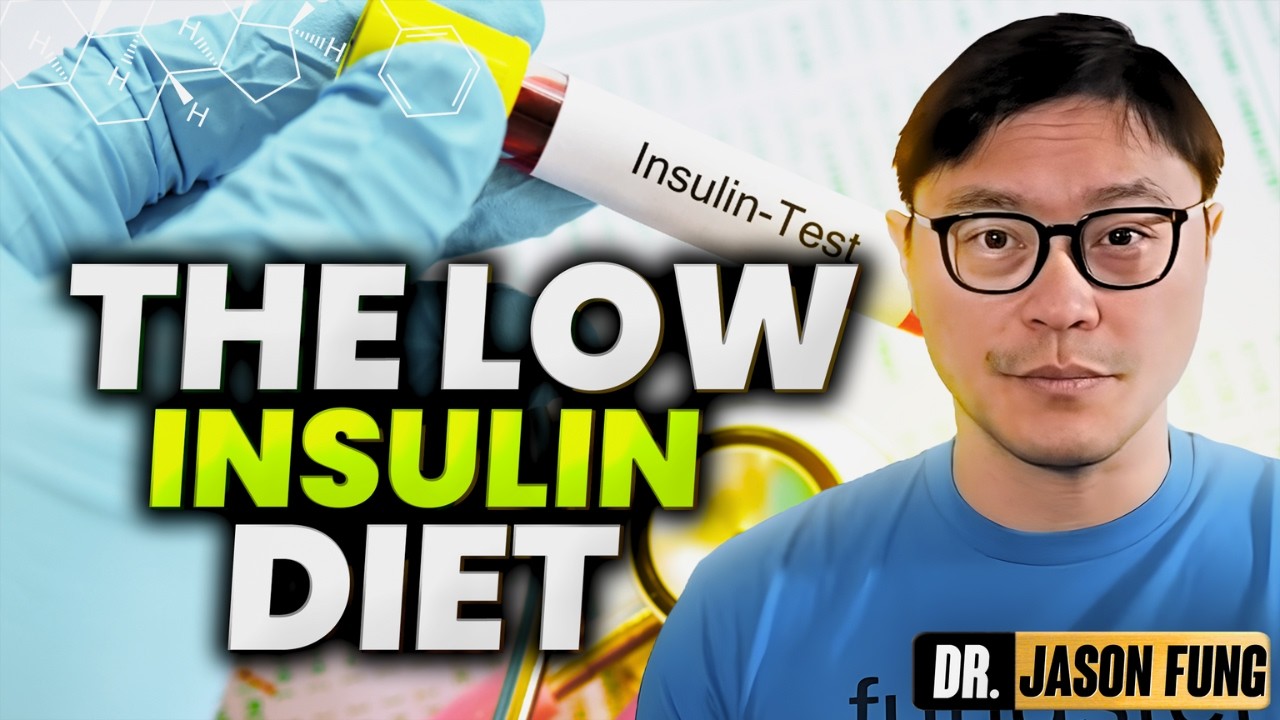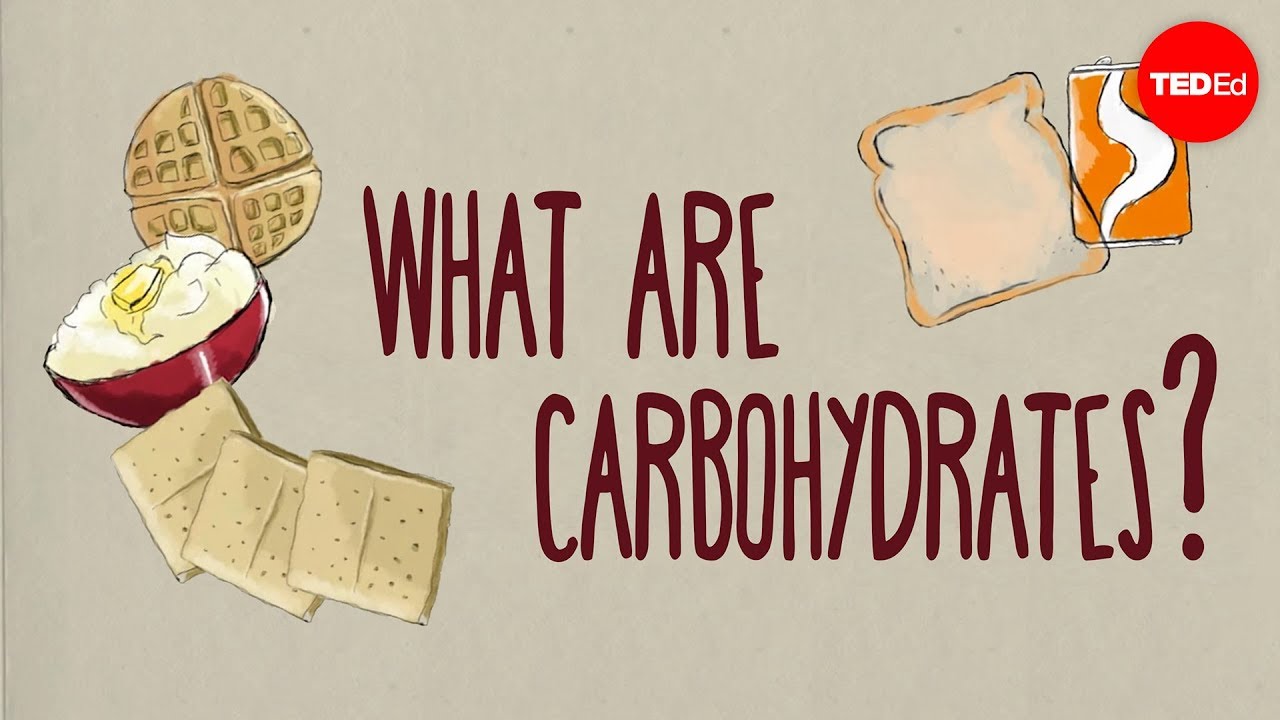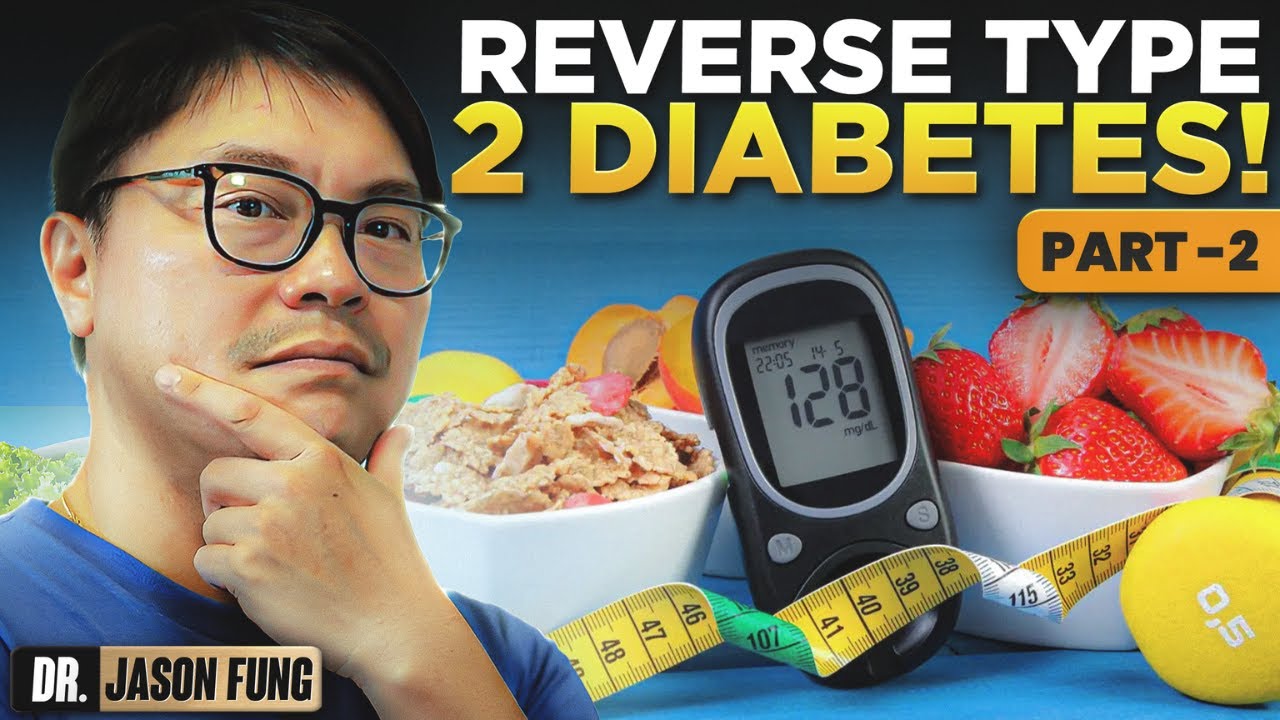Hi, I’m Dr. Jason Fun. Today we’re going to talk about advanced dietary strategies to lower your blood glucose and treat your type 2 diabetes without necessarily cutting carbohydrates. [Music] When we think about the disease of type 2 diabetes, remember that we’re talking about a disease where our body simply has too much sugar. Carbohydrates, that’s starches such as potatoes, rice, and bread.
They contain glucose. That’s their chemical structure. There’s nothing you can really do about it. So, when you’re eating carbohydrates, you’re eating glucose, and therefore your blood glucose will tend to go up.
So, one of the dietary strategies that is very effective is to reduce the total number of carbohydrates that you’re taking.
So, a low carbohydrate diet can be very effective. The second thing we talked about previously is intermittent fasting. And again, you’re not eating anything and you’re giving your body time to burn off that glucose. Um, third is to eat more fiber because even though they are a type of carbohydrate, they’re not absorbed and therefore it doesn’t contribute to the total body glucose. The fourth thing that you can do is to eat natural unrefined carbohydrates and that is those with a low glycemic index.
One of the things that distinguishes them is how quickly those carbohydrates are absorbed in the body. If you take white flour, a lot of the protein has been taken out, a lot of the fiber is taken out, the the fats, and it’s grinded up into a very, very fine powder.
So, when you eat it, it gets absorbed very quickly. This makes a huge difference to how high that blood glucose rises. This study by Dr.
Lewig from Harvard compared three different meals, all of the same calories. a high glycemic index uh breakfast which was instant oats, a medium glycemic index breakfast of steel cut oats. And remember the high and medium glycemic index not only have the same carbohydrates and calories, but they’re actually the same food. They’re just prepared differently. And this is what is called the food matrix.
Um the way that the food is processed makes it easier to absorb which has a much higher effect on the raising the blood glucose. And there was a low glycemic index breakfast of vegetable omelette which is lower in carbohydrates about 40% versus 65%. The change in the blood glucose is very different between all three meals.
As expected, the high glycemic index uh meal is going to shoot up the blood glucose as did the medium glycemic index. But look at the difference when your body absorbs all those carbohydrates uh instantaneously.
You get a very massive high peak in blood glucose, but then it just crashes and it goes much below normal. And what happens when the blood glucose goes down below normal is that you start to get hungry. and the low glycemic index, which of course had a much lower peak in glucose and also a much smoother uh blood glucose rise at lunchtime. What they found was that the people who ate a high glycemic index breakfast, the instant oats, were much more hungry and therefore they ate much more. When they’re allowed to eat what they want, they ate 81% more calories than the low glycemic index group and 53 more calories than the medium group.
Even though these were exactly the same foods and that shows you the difference between fast carbs and slow carbs, the natural unrefined carbohydrates, which are much smoother in terms of blood glucose, they contain more fiber, they’re less processed, they’re um not as easily digested, they’re not as easily absorbed, they tend to be much better.
The fifth thing you can do um is to eat the carbohydrates last. And it doesn’t always seem intuitive, but you have to remember that when you eat the carbohydrates first, what happens is that your body can absorb those carbohydrates very very quickly. The reason is that the foods don’t go from our mouth into our intestines where they’re absorbed. They’re actually held in the stomach.
The stomach um is the sort of reservoir for the food because as we’re eating the food, we’re eating it much faster than our intestines, the small intestines and large intestines can actually absorb. So if you eat pure carbohydrates such as a slice of bread at the beginning of the meal, it goes into the stomach and the stomach is going to hold it. Then when the stomach pushes it out, it’s sort of 100% carbohydrate. When it’s 100% highly refined carbohydrate, the blood glucose is going to spike.
If you eat proteins and vegetables first, what happens is that what by the time you get to the carbohydrates at the end of the meal, when it goes into the stomach, it’s actually going to be mixed around with all those proteins and fats and vegetables and all that sort of thing.
When the stomach pushes out a bolus of food into the intestines for it to absorb, there’s a bit of protein, there’s a bit of fat, there’s a bit of carbohydrates. So therefore, that blood glucose rise is much much slower. And that makes a big difference. The average serum glucose was much much lower when you ate the carbs last versus eating the carbs first. Even though the two groups of people ate exactly the same meal, it was the food order that made a difference.
In this follow-up study that they did, they showed again if you ate the carbs first, which was bread and orange juice, you got this massive spike in your blood glucose, and then it just crashes to the bottom.
When it crashes, you’re going to get hungry, which is going to make you go look for food and something to eat. As opposed to eating the chicken breast first or the broccoli first, uh, and then the bread last, you see that the blood glucose is much smoother despite the fact that both groups ate the exact same meal. Number six, don’t eat naked carbs. You can add something like vinegar or acidic foods to actually slow down the absorption.
They did a very interesting study where they compared bread and bread with lemon juice. And the idea is that uh organic acids are going to inactivate some of the salivary amaesis which are the digestive enzymes in our saliva that breaks down carbohydrates because the acidity uh inactivates it the carbohydrate is not broken down. So by the time it gets into the stomach and then into the intestines, there’s much less available that’s already broken down into uh individual glucose molecules for it to absorb. So what they found is that the amount of starch that is going to be released is much much lower. And that not only works with uh lemon juice but also all kinds of acids.
So acetic acid which is vinegar or or lactic acid which is fermented and pickled uh foods can also have this effect. Uh this is a study where they looked at bread with butter versus bread alone. And this goes to the idea of uh the naked carbohydrates. If you take the bread you can see that the area under the curve or the glycemic index are both higher.
Glycemic index of 71.
When you eat it with the butter or with olive oil, for example, you can drop it to 50, which is almost a one-third drop in the glycemic index simply by taking some olive oil with the bread. So, the traditional way that some people do with the olive oil and the vinegar and dipping it can be very useful. acid is going to uh slow down the digestion by blocking those salivary amaes and the olive oil makes it um gives it the the intestines something else other than the pure carbohydrate. Number seven, add resistant starch. Resistant starch is a form of starch that your body cannot absorb.
So starches are glucose. If you eat highly refined starches, you’re going to absorb all that glucose. If you take rice and you cook it and then cool it, when that starch uh recristallizes, some of it becomes resistant starch.
And what you see is that the blood sugar level goes down much lower than if you ate pure rice. This doesn’t work for potatoes because when you reheat the potatoes, uh all that resistant starch just gets broken down into glucose.
However, if you eat cooked and then cooled potatoes, such as potato salad, with some vinegar, for example, that means you’re going to create some of this resistant starch in the potato and then the vinegar is going to help that uh further slow down the rise. Number eight is to walk within 30 minutes of eating. If you compare eating a meal and then walking compared to walking and then eating a meal, there’s actually a major difference in the blood glucose. Why? Because after you’ve eaten a meal, there’s all this glucose.
And when you walk, you’re going to encourage your muscles to start burning that glucose rather than storing it away. And because you don’t want to store as much of it away, your insulin levels are going to fall.
So, for example, in this study, they found that when you had a uh walk before the meal, it didn’t really do much to the blood glucose. You see that the blood glucose there is about 6.5 uh after the meal.
However, if you walk immediately after the meal, it’s going to go right down to about 5.6 or so. So, it’s actually a significant drop. If you wait 30 minutes, it’s sort of in between. And the longer you wait after the meal, the less effect you’re going to get.
And number nine, don’t eat the late carheavy meal. And the idea is that the later you eat, the more your body wants to store it away because after you eat, you’re going to go to sleep. And therefore, the body knows this and therefore it’s going to tell your body to store more of it away. And we don’t want to store it away. If you look at this study for example, comparing the same meal but taking an early dinner versus a late dinner, you can see that the blood glucose rises much higher in the um meal that you take later.
And the difference is only a few hours. It’s a difference between a 900 p.m. dinner and a 6 p.m.
dinner. So for sure you need to uh avoid those late meals for a couple of reasons. One, if you eat late, there’s no way you can burn off that energy. You’re going to get a higher rise in insulin and you’re not going to be able to make up for it.
You’re less likely to go for a walk afterwards because it’s late.
And then the third thing is that you’re not going to be able to make up for it by eating less. If you eat a big breakfast, for example, you can always make up for it by eating less at lunch or dinner. But if you eat a very heavy uh late meal, there’s nothing you can do. The day is over, you’re going to sleep. All of that’s going to get stored away.
So, those are some additional ways other than just eating less carbohydrates to lower your blood glucose naturally. Thanks very much. We’ll see you next time..
Read More: BRANDY B.NPC COMPETITOR BACK ROUTINE




